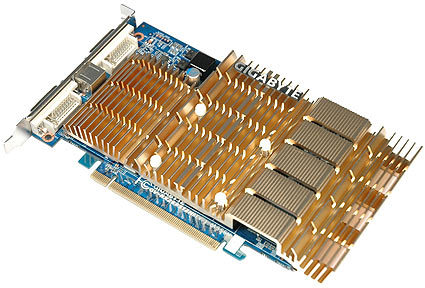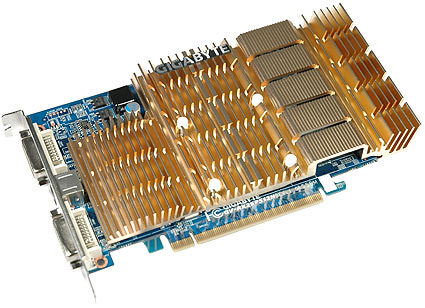The $500 Gaming Machine, 2007 Edition
Graphics: Radeon HD 2600 Pro By Gigabyte
It's rather difficult to pick the perfect graphics card at a certain price point, because this probably is the fastest-changing segment of the hardware market. We looked at our
Interactive Desktop VGA Charts (2007 Edition) to find a suitable graphics card. The charts offer great comparisons of most of the current- and last-generation graphics card models, based on objective benchmarks. For each graphics chip and memory device, you will find multiple vendors.
Right now, an ATI/AMD Radeon HD 2600 or Nvidia's GeForce 8600 series are the mainstream workhorses for 3D graphics. As you can see in our VGA Charts, both cards offer mainstream performance at very acceptable prices. There might still be Radeon X1800 or X1900 cards, or GeForce 7800 and 7900 parts available for equally interesting prices. However, they will consume considerably more energy and they aren't DirectX 10 compliant. While this isn't a real issue today, it will be with upcoming 3D game titles. We recommend going for a reasonable DirectX10 graphics card and then upgrade to something with more bang later on. Graphics performance will speed up the pace faster than most other components.
We chose Gigabyte's Radeon HD 2600 Pro. It has 256 MB GDDR2 memory running at 800 MHz, a 600 MHz chip clock speed and dual-DVI interfaces. You can always convert DVI interfaces to attach an analog S-Sub display, but you will be thankful to get two DVI ports if you ever want to hook up two TFT displays. Lastly, this graphics card requires little idle power and is passively cooled, which is important if you want the system to be quiet and energy efficient. Make sure your case is properly ventilated to ensure stable operation. If you cannot or if you live in a really hot environment, we recommend investing in a graphics card that has a fan.
Get Tom's Hardware's best news and in-depth reviews, straight to your inbox.
Current page: Graphics: Radeon HD 2600 Pro By Gigabyte
Prev Page HDD: 320 GB Barracuda 7200.10 By Seagate Next Page Case: Coolermaster Centurion 5 CAC-T05 Black/Silver
Patrick Schmid was the editor-in-chief for Tom's Hardware from 2005 to 2006. He wrote numerous articles on a wide range of hardware topics, including storage, CPUs, and system builds.


